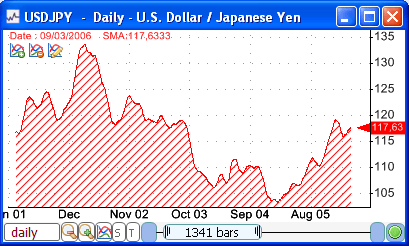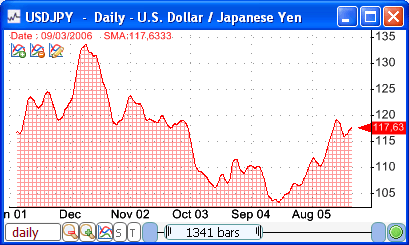Steps: - Right click on a chart then click on "Create new pane" - Right click on the new pane then click on "Edit formula" - Type the following lines to add a moving average indicator a = sma(close, 30); plot(a, "SMA", colorRed, ChartLine, StyleOwnScale); - To create a hatched area, we must use the "SetHatchBrush" function. Type the function just after the indicator you want to update. Example Chart 1: SetHatchBrush("BackwardDiagonal", colorRed);  Example Chart 2: SetHatchBrush("SmallGrid", colorRed|100);  By adding "|100" next to "colorRed", we instruct QuantShare to set the opacity of the red color to 100 (0 = transparent, 255 = opaque) To list the different hatch brushes, set the mouse cursor after "SetHatchBrush(" then use the CONTROL+SPACE shortcut. There are more than 50 hatch brushes, including: Cross DarkDownwardDiagonal DashedHorizontal Divot DottedDiamond LargeCheckerBoard Percent25
|

|
|
|
|